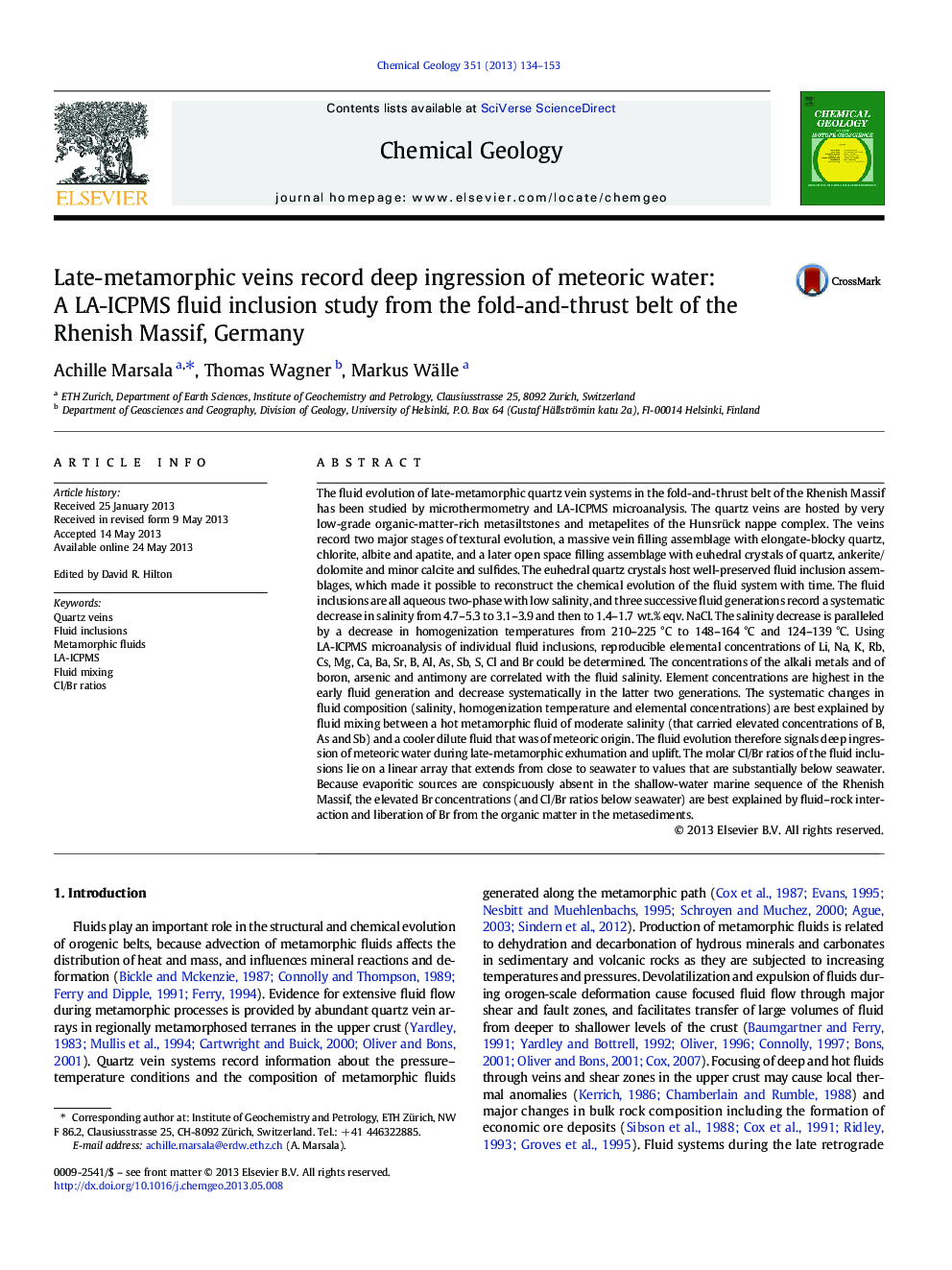| کد مقاله | کد نشریه | سال انتشار | مقاله انگلیسی | نسخه تمام متن |
|---|---|---|---|---|
| 6436908 | 1637618 | 2013 | 20 صفحه PDF | دانلود رایگان |

- Elemental composition of low-salinity metamorphic fluids determined by LA-ICPMS
- Systematic decrease in salinity and elemental concentrations with time
- Progressive fluid dilution signals deep ingression of meteoric water.
- Cl/Br ratios below seawater caused by Br released from organic matter
The fluid evolution of late-metamorphic quartz vein systems in the fold-and-thrust belt of the Rhenish Massif has been studied by microthermometry and LA-ICPMS microanalysis. The quartz veins are hosted by very low-grade organic-matter-rich metasiltstones and metapelites of the Hunsrück nappe complex. The veins record two major stages of textural evolution, a massive vein filling assemblage with elongate-blocky quartz, chlorite, albite and apatite, and a later open space filling assemblage with euhedral crystals of quartz, ankerite/dolomite and minor calcite and sulfides. The euhedral quartz crystals host well-preserved fluid inclusion assemblages, which made it possible to reconstruct the chemical evolution of the fluid system with time. The fluid inclusions are all aqueous two-phase with low salinity, and three successive fluid generations record a systematic decrease in salinity from 4.7-5.3 to 3.1-3.9 and then to 1.4-1.7 wt.% eqv. NaCl. The salinity decrease is paralleled by a decrease in homogenization temperatures from 210-225 °C to 148-164 °C and 124-139 °C. Using LA-ICPMS microanalysis of individual fluid inclusions, reproducible elemental concentrations of Li, Na, K, Rb, Cs, Mg, Ca, Ba, Sr, B, Al, As, Sb, S, Cl and Br could be determined. The concentrations of the alkali metals and of boron, arsenic and antimony are correlated with the fluid salinity. Element concentrations are highest in the early fluid generation and decrease systematically in the latter two generations. The systematic changes in fluid composition (salinity, homogenization temperature and elemental concentrations) are best explained by fluid mixing between a hot metamorphic fluid of moderate salinity (that carried elevated concentrations of B, As and Sb) and a cooler dilute fluid that was of meteoric origin. The fluid evolution therefore signals deep ingression of meteoric water during late-metamorphic exhumation and uplift. The molar Cl/Br ratios of the fluid inclusions lie on a linear array that extends from close to seawater to values that are substantially below seawater. Because evaporitic sources are conspicuously absent in the shallow-water marine sequence of the Rhenish Massif, the elevated Br concentrations (and Cl/Br ratios below seawater) are best explained by fluid-rock interaction and liberation of Br from the organic matter in the metasediments.
Journal: Chemical Geology - Volume 351, 2 August 2013, Pages 134-153